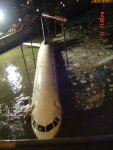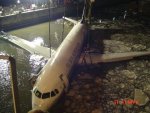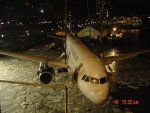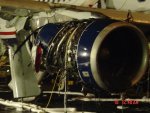Re: Airline Crash...
The issue of the airworthyness certificate has to do with being allowed to fly it in the US, on the way to somewhere else. You may have a point about who's airworthyness certificate is applicable, once a sale has been made, but you would probably find that the US would require airworthyness standards at least as stringent as ours, for the plane to be flown out of an airport in the States. I'm not completely conversant on this issue, but can tell you that foreign air carriers and operators usually have to meet minimum standards to operate an aircraft here.
On the autopilot issue in the Dash 8/Q400, there were some reports that said use of the autopilot on approach in icing conditions, was prohibited by company procedure. I later read that this is only true in cases of severe icing, rather than moderate icing. There may also be guidelines and requirements on this in the aircraft manufacturer's operating manual.
Regardless, the reason why the autopilot issue is key, is that an aircraft that is picking up ice will both become heavier and suffer from airflow disruptions. Generally what happens is that the wing requires more speed and/or angle of attack, to maintiain a certain amount of lift. If the autopilot is flying the airplane and power is set for a certain airspeed (either manually or by the autopilot), the pilots may not notice a gradual increase in pitch angle as the airplane attempts to hold altitude. They are supposed to be monitoring what is going on, but if they don't, they might miss the key indicators of a problem.
On the other hand, if they were hand flying the airplane, they would have noticed the need to pull back on the yoke to maintain altitude and a need to increase power to maintain airspeed. You can also sometimes feel that the aircraft is about to stall. It is my personal belief that this was a classic "stall/spin accident," brought on by icing. One clue in regard to this is that the aircraft was facing in the direction opposite of the intended flight, when found on the ground.
Another issue that I noticed that doesn't seem to have been brought up by anyone, is that the wing deicing system was apparently activated soon after departure at Newark. In an aircraft with pnuematic deicing boots, that is usually not done. You usually wait until you have a little bit of ice built up, and then you activate the system to "break" it off. If the boots are activated and constantly expanding and contracting as the ice builds up, you can actually end up with a layer of ice that has a hollowed out shell, into which the boots just move in and out. The end result is that you don't shed the ice.
Clear icing v. rime icing could also be an issue. Rime ice is sort of a granular substance that looks like frozen snow - it has a "whitish" appearance. Pnuematic deicing boots do a pretty good job of removing it, because it tends to collect mostly on the leading edge of the wings. Rime ice is also lighter than clear ice.
The problem with clear ice is both that it is heavy and it tends to run back over the wings, behind the deicing boots. Its scary stuff and there were some reports of clear ice in the area.
This accident could prove to be one in which pin pointing an exact cause is difficult. My guess is that the aircraft stalled in an instant and very little was said in the cockpit - they would have been startled and intensely involved in trying regain control. There was most likely no evidence of the icing remaining either, due to the post crash fire. What might show up on the data recorder, however, are flight control inputs made by the autopilot, that might show a trend towards increasing angle of attack in level flight.
I've been out of the business for a long time, but I still hate reading about this stuff. I guess having made a living in the field for 20 years makes it kind of personal.
























